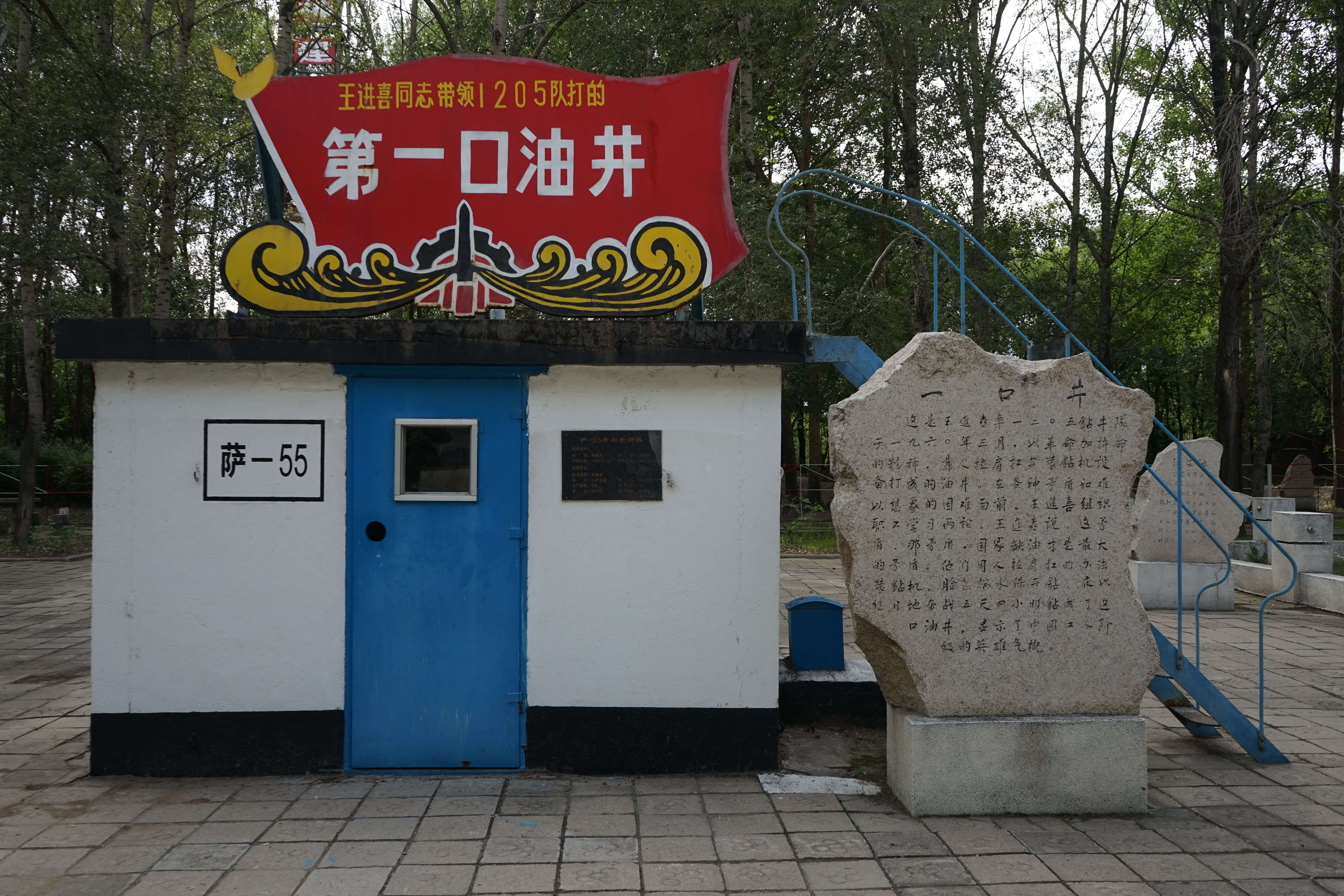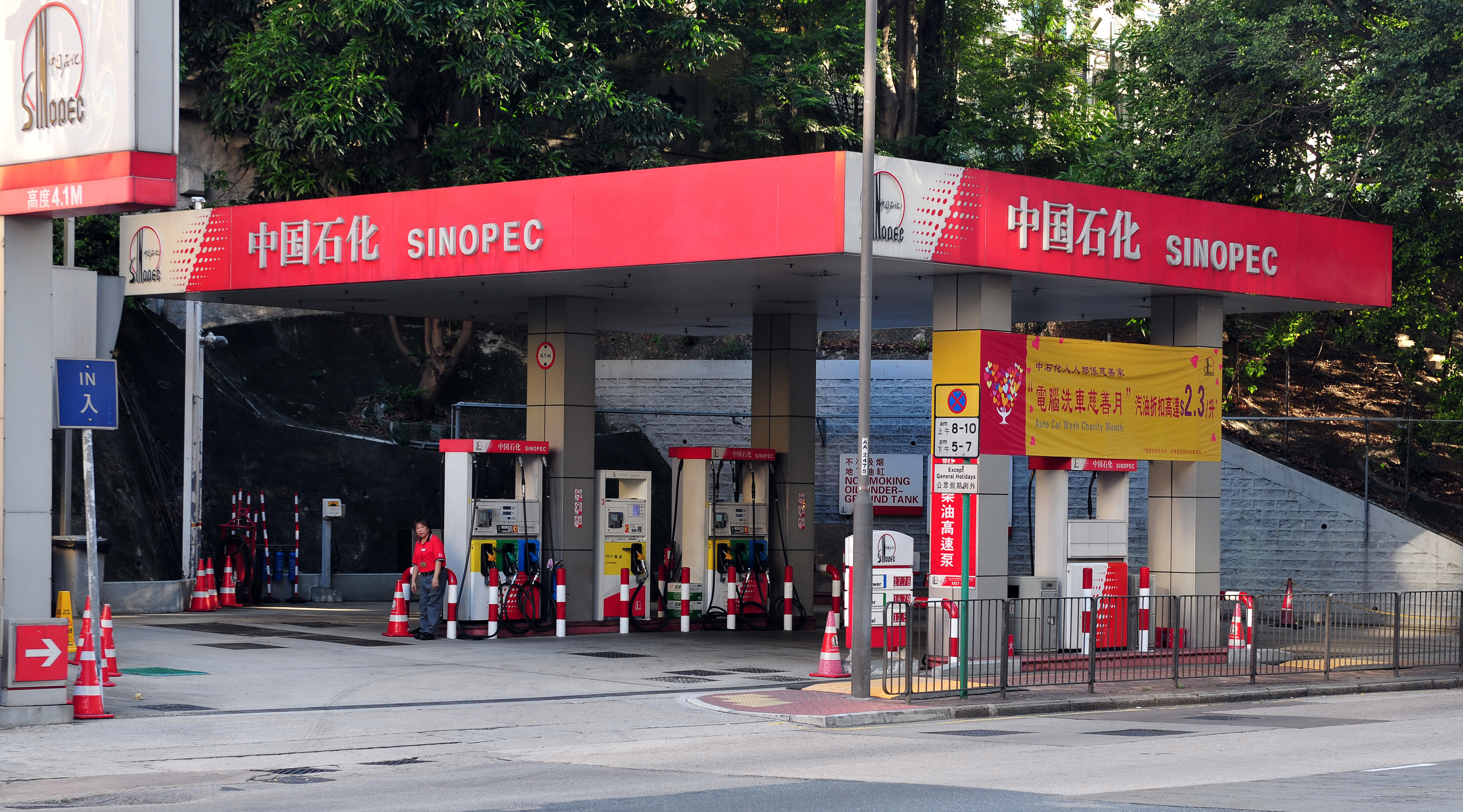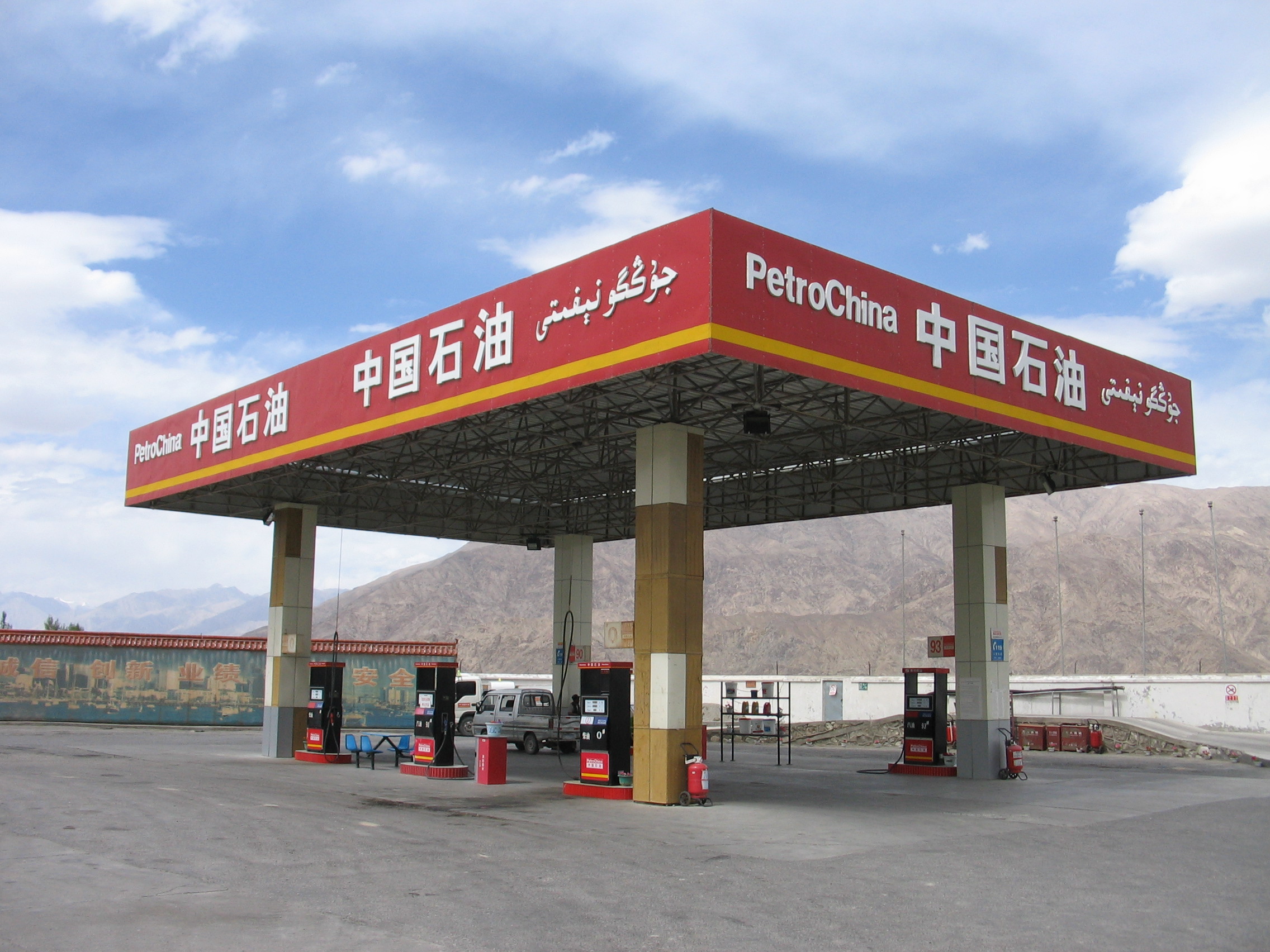|
Tazhong
Tazhong (; Pinyin ''tǎ zhōng zhèn'') is a town in Qiemo County, Bayingolin Mongol Autonomous Prefecture, Xinjiang. Tazhong administers one community: Tazhong Community (). Tazhong was created on July 24, 2015. The population is typically around 20,000, 90% of which are temporary residents. Geography Tazhong is located in centre of the Taklamakan Desert. Climate Economy The petroleum industry makes up most of the economy of Tazhong. There are more than 100 oilfield units and engineering construction units such as PetroChina Tarim Oilfield Branch, Sinopec Northwest Oilfield Branch, Daqing Oilfield Tadong Company, and nearly 100 various commercial outlets in the area of Tazhong. Other than petroleum, the service and tourism industry also support Tazhong. Transport Tarim Desert Highway runs through Tazhong. See also * List of township-level divisions of Xinjiang This is a list of township-level divisions (formal fourth-level administrative divisions including town ... [...More Info...] [...Related Items...] OR: [Wikipedia] [Google] [Baidu] |
Qiemo County
Qiemo County ( zh, c= ) as the official romanized name, also transliterated from Uyghur as Qarqan County ( Uyghur: ; zh, c=恰尔羌县), is a county under the administration of the Bayin'gholin Mongol Autonomous Prefecture in the Xinjiang Uyghur Autonomous Region of the People's Republic of China, bordering the Tibet Autonomous Region to the south. Its area is and, according to the 2002 census, it has a population of 60,000. The county seat is at Qiemo Town. Name "Qiemo (W-G: Ch'ieh-mo) 且末 = modern Cherchen ( zh, c=车尔臣) or Charchan (Uyghur: ''Qarqan''). There has been uncertainty about this name as Chavannes (1907), p. 156, and then Stein (1921a), Vol. I, 296 ff., gave an incorrect romanization for the first character. Chavannes, using the French EFEO romanization system, gave ''tsiu'', and Stein used the Wade-Giles equivalent, ''chü''. In fact, the character is correctly rendered ''k'ie'' in EFEO, ch'ieh in Wade-Giles and qie in pinyin. Nevertheless, there ha ... [...More Info...] [...Related Items...] OR: [Wikipedia] [Google] [Baidu] |
Tarim Desert Highway
200px, Vegetation on either side of the highway to prevent shifting sand dunes from covering it, as well as a blue pump house in the distance. 200px, PetroChina gas station on the highway route The Tarim Desert Highway (), also known as the Cross-Desert Highway (CDH) or Taklamakan Desert Highway, crosses the Taklamakan Desert in China. There are now three highways: two main highways and one branch highway. Lunmin Highway The Lunmin Highway links the cities of Luntai () on National Highway 314 and Minfeng () on National Highway 315, on the northern and southern edges of the Tarim Basin. The total length of the highway is , approximately of which crosses uninhabited areas covered by shifting sand dunes, making it the longest such highway in the world. History Construction on the highway began in 1993 because of expansion in the petroleum industry, requiring fast shipping across the Taklamakan desert. Construction was completed in 1995. Maintenance To prevent the shifting sand ... [...More Info...] [...Related Items...] OR: [Wikipedia] [Google] [Baidu] |
Taklamakan Desert
The Taklamakan Desert ( ) is a desert in northwest China's Xinjiang region. Located inside the Tarim Basin in Southern Xinjiang, it is bounded by the Kunlun Mountains to the south, the Pamir Mountains to the west, the Tian Shan range to the north, and the Gobi Desert to the east. Etymology While most researchers agree on being the Persian word for "place", etymology of ''Takla'' is less clear. The word may be a Uyghur borrowing of the Persian , "to leave alone/out/behind, relinquish, abandon" + ''makan''. Another plausible explanation suggests it is derived from Turki ''taqlar makan'', describing "the place of ruins". Chinese scholars Wang Guowei and Huang Wenbi linked the name to the Tocharians, a historical people of the Tarim Basin, making the meaning of "Taklamakan" similar to "Tocharistan". According to Uyghur researcher Turdi Mettursun Kara, the name Taklamakan comes from the expression Terk-i Mekan. The name is first mentioned as Terk-i Makan (ترك مكان ... [...More Info...] [...Related Items...] OR: [Wikipedia] [Google] [Baidu] |
List Of Township-level Divisions Of Xinjiang
This is a list of township-level divisions (formal fourth-level administrative divisions including towns, townships, subdistricts and county districts) of the Xinjiang Uyghur Autonomous Region, People's Republic of China. Ürümqi Dabancheng District Midong District Saybagh District Shuimogou District Tianshan District Toutunhe District Xinshi District Ürümqi County * Anningqu Aksu Prefecture Aksu City Subdistrict (街道) * Langan Subdistrict (栏杆街道), Yinbaza Subdistrict (英巴扎街道), Hongqiao Subdistrict (红桥街道), Xincheng Subdistrict (新城街道), Nancheng Subdistrict (南城街道) Town (镇) * Kaletale (喀勒塔勒镇), Ayikule (阿依库勒镇) Township (乡) * Yiganqi Township (依干其乡), Baimetugeman Township (拜什吐格曼乡), Tuopuluke Township (托普鲁克乡), Kumubaxi Township (库木巴希乡), Tuokayi Township (托喀依乡) Onsu / Wensu County Towns (بازىرى / 镇): * Wensu Town (Onsu; ئون� ... [...More Info...] [...Related Items...] OR: [Wikipedia] [Google] [Baidu] |
Petroleum Industry In China
The impact of the petroleum industry has been increasing globally as the People's Republic of China ranks seventh for oil production and second in crude oil consumption in the world. China became the world's largest oil importer in 2013. History Early history The late Qing dynasty banned mining because of the traditional cosmological beliefs which regarded the land as a sacred legacy. This ban was lifted during the modernization effort of the Self-Strengthening Movement as the Qing dynasty sought to develop a modern navy and modern industry. In 1875, the court designated Cizhou (in what is now Hebei province) and Taiwan as testing grounds for oil extraction. Qing attempts at oil exploration were hampered by corruption, low efficiency, and lack of sufficient domestic investment capacity for oil extraction and transportation. The Qing court was also concerned about foreign investment and the perceived risk of selling the country to foreigners. Nationalist Era In the 1930s, ... [...More Info...] [...Related Items...] OR: [Wikipedia] [Google] [Baidu] |
Daqing Oilfield Company
Daqing () is a prefecture-level city in the west of Heilongjiang province, People's Republic of China. The name literally means "Great Celebration" and refers to the tenth anniversary of the PRC. Daqing is known as the "Oil Capital of China" and has experienced a phenomenal boom since oil was discovered at the Daqing Oil Field in 1959. Its population was 2,781,562 as of the 2020 census, of whom 1,574,389 lived in the built-up (or metro) area in four out of the total of five urban districts: Sartu, Longfeng, Ranghulu and Honggang. History The region now known as Daqing Prefecture was a reasonably insignificant place until the Qing dynasty, known only as an unsettled hunting ground of Dörbet Oirat tribes due to its wetland and prairies. The region began to grow slightly after the Russian Empire constructed the Chinese Eastern Railway (KVZhD) through the area in 1898. The railway has a station at Sartu in today's Sartu District. It was not until 1959 that oil was discovered ... [...More Info...] [...Related Items...] OR: [Wikipedia] [Google] [Baidu] |
Sinopec
China Petroleum and Chemical Corporation, or Sinopec Group, is a Chinese oil and gas enterprise based in Chaoyang District, Beijing. The SASAC administers China Petroleum and Chemical Corporation for the benefit of State Council of the People's Republic of China. China Petroleum and Chemical Corporation operates a publicly traded subsidiary, called Sinopec, listed in Hong Kong and Shanghai stock exchanges. China Petroleum and Chemical Corporation is the world's largest oil refining conglomerate, state owned enterprise, and second highest revenue company in the world behind Walmart. History Domestic In 1994, Sinopec was among the large industrial state-owned enterprises of China which were selected for a pilot program of restructuring as state holding companies, thereby enabling partial public listings of its subsidiaries' assets. Sinopec Limited was established as a joint stock entity under the China Petrochemical Corporation Group (Sinopec Group) in February 2000. ... [...More Info...] [...Related Items...] OR: [Wikipedia] [Google] [Baidu] |
PetroChina
PetroChina Company Limited () is a Chinese oil and gas company and is the listed arm of state-owned China National Petroleum Corporation (CNPC), headquartered in Dongcheng District, Beijing. The company is currently Asia's largest oil and gas producer. Traded in Hong Kong and New York, the mainland enterprise announced its plans to issue stock in Shanghai in November 2007,Analysts express optimism about Chinese shares (Xinhuanet.com, with source from ''Shanghai Daily'') and subsequently entered the constituent of SSE 50 Index. In the 2020 ''Forbes' ... [...More Info...] [...Related Items...] OR: [Wikipedia] [Google] [Baidu] |
Towns Of China
When referring to political divisions of China, town is the standard English translation of the Chinese (traditional: ; zh, p=zhèn , w=chen4). The Constitution of the People's Republic of China classifies towns as fourth-level administrative units, along with, for example, townships ( zh, s=乡 , p=xiāng). A township is typically smaller in population and more remote than a town. Similar to higher-level administrative units, the borders of a town would typically include an urban core (a small town with the population on the order of 10,000 people), as well as a rural area with some villages ( zh, labels=no, s=村 , p=cūn, or zh, labels=no, s=庄 , p=zhuāng). Map representation A typical provincial map would merely show a town as a circle centered at its urban area and labeled with its name, while a more detailed one (e.g., a map of a single county-level division) would also show the borders dividing the county or county-level city A county-level city () is a Count ... [...More Info...] [...Related Items...] OR: [Wikipedia] [Google] [Baidu] |
China Meteorological Administration
The China Meteorological Administration (CMA) is the national weather service of the People's Republic of China. The institution is located in Beijing. History The agency was originally established in December 1949 as the Central Military Commission Meteorological Bureau. It replaced the Central Weather Bureau formed in 1941. In 1994, the CMA was transformed from a subordinate governmental body into one of the public service agencies under the State Council.CMA.gov history Meteorological bureaus are established in 31 provinces, autonomous regions and [...More Info...] [...Related Items...] OR: [Wikipedia] [Google] [Baidu] |
China
China, officially the People's Republic of China (PRC), is a country in East Asia. With population of China, a population exceeding 1.4 billion, it is the list of countries by population (United Nations), second-most populous country after India, representing 17.4% of the world population. China spans the equivalent of five time zones and Borders of China, borders fourteen countries by land across an area of nearly , making it the list of countries and dependencies by area, third-largest country by land area. The country is divided into 33 Province-level divisions of China, province-level divisions: 22 provinces of China, provinces, 5 autonomous regions of China, autonomous regions, 4 direct-administered municipalities of China, municipalities, and 2 semi-autonomous special administrative regions. Beijing is the country's capital, while Shanghai is List of cities in China by population, its most populous city by urban area and largest financial center. Considered one of six ... [...More Info...] [...Related Items...] OR: [Wikipedia] [Google] [Baidu] |
Pinyin
Hanyu Pinyin, or simply pinyin, officially the Chinese Phonetic Alphabet, is the most common romanization system for Standard Chinese. ''Hanyu'' () literally means 'Han Chinese, Han language'—that is, the Chinese language—while ''pinyin'' literally means 'spelled sounds'. Pinyin is the official romanization system used in China, Singapore, Taiwan, and by the United Nations. Its use has become common when transliterating Standard Chinese mostly regardless of region, though it is less ubiquitous in Taiwan. It is used to teach Standard Chinese, normally written with Chinese characters, to students in mainland China and Singapore. Pinyin is also used by various Chinese input method, input methods on computers and to lexicographic ordering, categorize entries in some Chinese dictionaries. In pinyin, each Chinese syllable is spelled in terms of an optional initial (linguistics), initial and a final (linguistics), final, each of which is represented by one or more letters. Initi ... [...More Info...] [...Related Items...] OR: [Wikipedia] [Google] [Baidu] |






